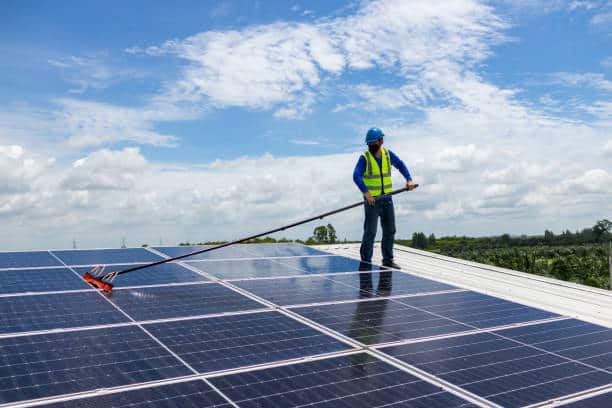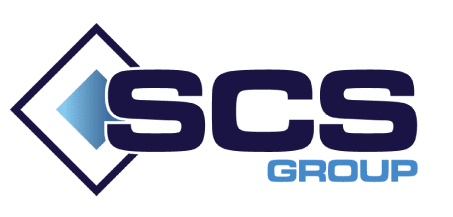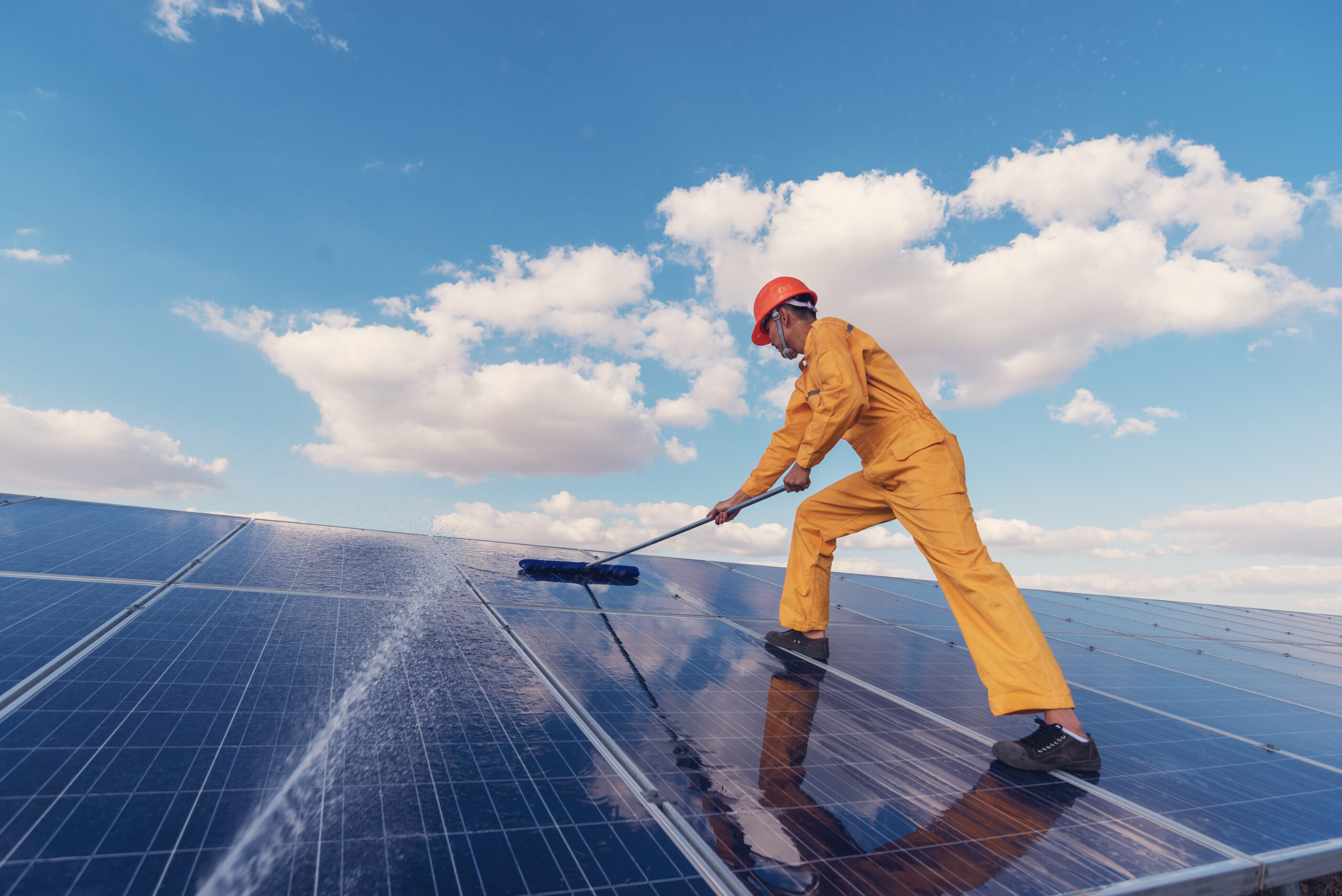Solar panels are an incredible innovation that harnesses the power of the sun to generate electricity, helping us move towards a greener and more sustainable future. However, to ensure their optimal performance and longevity, it's crucial to keep them clean. Regular maintenance and solar panel cleaning can significantly enhance their efficiency and overall output. In this comprehensive guide, we'll walk you through the step-by-step process of effectively cleaning your solar panels, ensuring they shine and generate power at their best.
Why Clean Solar Panels Matter
Before diving into the cleaning process, it's important to understand why clean solar panels are essential. Solar panels are designed to capture sunlight and convert it into electricity. Over time, various environmental factors such as dust, dirt, pollen, bird droppings, and even air pollution can accumulate on the surface of the panels. These deposits create a barrier between the sunlight and the photovoltaic cells, reducing the panel's ability to generate electricity efficiently.
Dirty solar panels can experience up to a 30% decrease in efficiency, which can lead to reduced energy production and financial losses. Cleaning your solar panels regularly not only ensures optimal performance but also maximizes your return on investment.

Step-by-Step Guide to Cleaning Solar Panels
1. Safety First
Before you begin, ensure your safety by turning off the solar panel system and disconnecting it from the grid. This precautionary step prevents any electrical accidents while you're cleaning solar panels.
2. Choose the Right Time
Plan your solar panel cleaning during the early morning or late afternoon when the panels are cooler and the sun is less intense. This minimizes the risk of water evaporating quickly and leaving behind streaks.
3. Gather Your Cleaning Supplies
You'll need a bucket of warm water, a gentle soap (preferably biodegradable), a soft brush or sponge, a squeegee, and a hose. Avoid using abrasive materials that could scratch the panel surface.
4. Rinse the Panels
Start by giving the panels a gentle rinse with the hose to remove loose debris. This prepares the surface for a more thorough cleaning.
5. Prepare the Cleaning Solution
Mix the gentle soap with warm water in the bucket to create a cleaning solution. Avoid using harsh chemicals that could damage the panels or harm the environment.
6. Scrub Gently
Dip the soft brush or sponge into the cleaning solution and gently scrub the panel surface in a circular motion. Focus on areas with stubborn dirt or bird droppings.
7. Rinse Thoroughly
Once you've scrubbed the panels, rinse them again with the hose to remove the soapy residue. Make sure no soap or cleaning solution is left behind.
8. Squeegee for Shine
Using a squeegee, carefully remove the water from the panel surface. This step prevents water spots and ensures the panels dry uniformly.
9. Inspect for Residue
After the panels are dry, inspect them for any residue or streaks. If you notice any, simply repeat the cleaning process.
10. Reconnect and Monitor
Finally, once you're satisfied with the cleanliness of your solar panels, reconnect the system to the grid. Regularly monitor your energy production to ensure the panels are performing optimally.
What are the pain points on cleaning solar panel process
Cleaning solar panels may seem straightforward, but there are several potential pain points associated with the process that can affect efficiency and effectiveness:
Access Challenges:
We often installed solar panels on rooftops or high structures, making access a significant challenge. Cleaning personnel may need specialized equipment, safety gear, and training to safely reach and work on panels.
Delicate Surfaces:
Solar panels have sensitive surfaces that can scratch easily. Using improper cleaning tools or harsh chemicals can damage the protective coatings, reducing the panels' energy efficiency over time.
Hard-to-Reach Spots:
Dust, debris, and bird droppings tend to accumulate in corners and edges of solar panels, which can be difficult to clean thoroughly. Incomplete solar panel cleaning can lead to reduced energy production.
Water Stains and Mineral Deposits:
Using unfiltered or hard water during solar panel cleaning can leave mineral deposits and water stains on panels, impacting their ability to capture sunlight efficiently.
Frequency of cleaning:
Depending on the location and environmental factors, solar panels may require frequent cleaning. Determining the optimal solar panel cleaning schedule without disrupting energy production can be challenging.
Weather Conditions:
Cleaning solar panels in adverse weather conditions, such as extreme heat, cold, or rain, can be hazardous and affect cleaning quality.
Safety Concerns:
Working at heights poses safety risks for cleaning personnel. Implementing proper safety protocols and ensuring workers are trained to work at heights are essential to preventing accidents.
Chemical Residue:
Some cleaning agents may leave chemical residue on the panels, impacting their performance and potentially harming the environment.
Inefficiency:
Manual cleaning methods might be time-consuming and labor-intensive. For larger solar installations, this can lead to higher maintenance costs.
Lack of Maintenance Documentation:
Without proper record-keeping, it can be challenging to track the solar panel cleaning schedule and assess the impact of maintenance on energy production.
To address these pain points, it's important to develop a well-structured cleaning plan that includes proper equipment, trained personnel, and environmentally friendly cleaning agents. Additionally, investing in automated cleaning systems or specialized cleaning services can help minimize the challenges associated with manual cleaning. Regular monitoring and documentation of maintenance activities can also contribute to the long-term efficiency of solar panels.
Conclusion
Maintaining clean solar panels is an essential aspect of maximizing their efficiency and longevity. By following this step-by-step guide, you can ensure that your solar panels continue to generate electricity at their full potential. Remember to clean your panels regularly and safely to reap the rewards of clean energy and a reduced carbon footprint.







